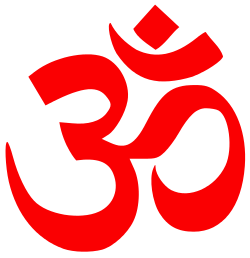Matsyasana

Matsyasana (mahtz-YAH-sah-nah[1]; Sanskrit: मत्स्यासन; IAST: Matsyāsana) or Fish Pose[2] is an asana.
It is commonly considered a counterasana to Sarvangasana, or shoulder stand, specifically within the context of the Ashtanga Vinyasa Yoga Primary Series.[3]
| Part of a series on | ||||||||||||||||||||||||||
| Hindu philosophy | ||||||||||||||||||||||||||
|---|---|---|---|---|---|---|---|---|---|---|---|---|---|---|---|---|---|---|---|---|---|---|---|---|---|---|
 | ||||||||||||||||||||||||||
| Āstika | ||||||||||||||||||||||||||
|
|
||||||||||||||||||||||||||
| Nāstika | ||||||||||||||||||||||||||
|
Other schools |
||||||||||||||||||||||||||
| People | ||||||||||||||||||||||||||
|
||||||||||||||||||||||||||
|
Poet-Saints
|
||||||||||||||||||||||||||
Etymology
The name comes from the Sanskrit words matsya (मत्स्य) meaning "fish"[4] and asana (आसन) meaning "posture" or "seat".[5]
Description
The asana is a backbend, where the practitioner lies on his or her back and lifts the heart (anahata) chakra by rising up on the elbows and drawing the shoulders back. The neck is lengthened, and the crown of the head Sahasrara chakra is "pointed" toward the 'wall' behind the practitioner. As the arch of the back deepens with practice, and the heart and throat open further, the top of the head may brush the ground, but no weight should rest upon it.
Variations
- The legs can kept straight on the ground with toes pointed.
- The legs again straight can be lifted about 6 inches off the ground with toes pointed.
- The hands may also be placed before the heart in Añjali Mudrā.[6]
Gallery
See also
References
- ↑ Budilovsky, Joan; Adamson, Eve (2000). The complete idiot's guide to yoga (2 ed.). Penguin. p. 163. ISBN 978-0-02-863970-3. Retrieved 11 April 2011.
- ↑ "Yoga Journal - Fish Pose". Retrieved 2011-04-09.
- ↑ Maehle, Gregor (10 September 2007). Ashtanga Yoga: Practice and Philosophy. New World Library. p. 120. ISBN 978-1-57731-606-0. Retrieved 9 April 2011.
- ↑ Joshi, Dr. K S (1 March 2005). Yoga In Daily Life. Orient Paperbacks. p. 70. ISBN 978-81-222-0049-2. Retrieved 9 April 2011.
- ↑ Sinha, S.C. (1 June 1996). Dictionary of Roop Basant Philosophy. Anmol Publications PVT. LTD. p. 18. ISBN 978-81-7041-293-9. Retrieved 9 April 2011.
- ↑ "Yoga Journal - Fish Pose". Retrieved 2011-04-09.
Further reading
- Iyengar, B. K. S. (1 October 2005). Illustrated Light On Yoga. HarperCollins. ISBN 978-81-7223-606-9. Retrieved 9 April 2011.
- Saraswati, Swami Satyananda (1 August 2003). Asana Pranayama Mudra Bandha. Nesma Books India. ISBN 978-81-86336-14-4. Retrieved 9 April 2011.
- Saraswati, Swami Satyananda (January 2004). A Systematic Course in the Ancient Tantric Techniques of Yoga and Kriya. Nesma Books India. ISBN 978-81-85787-08-4. Retrieved 9 April 2011.
External links
| ||||||||||||||||||||||||||||||||||||||||||||||||||||||||||||||||||||||||

